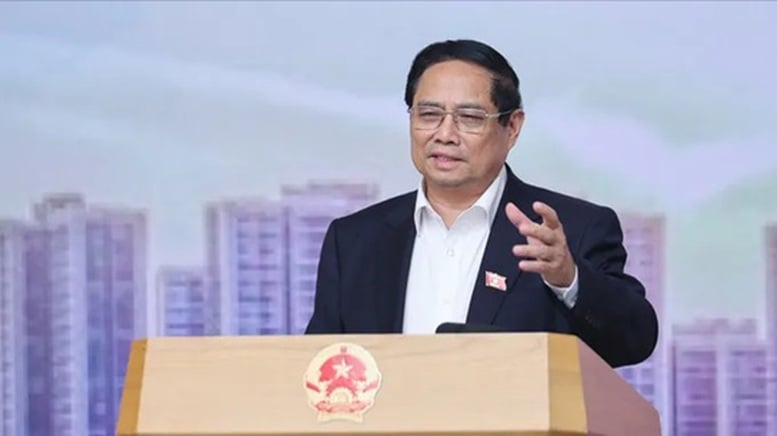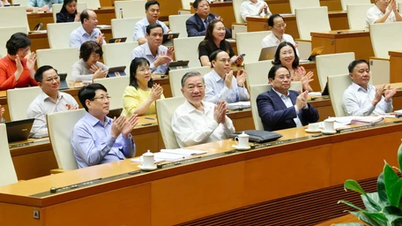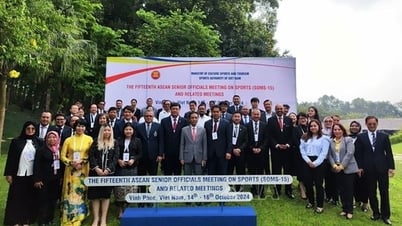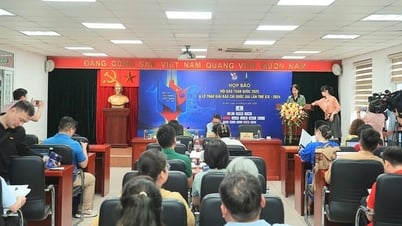Prime Minister Pham Minh Chinh has repeatedly emphasized that decentralization and delegation of power must go hand in hand with resource allocation, improving the implementation capacity of subordinates, and designing tools to strengthen inspection and supervision.
This is not just an administrative technical move, but a profound institutional reform, demonstrating a strong innovative mindset in national governance. If implemented seriously and synchronously, this could become a turning point paving the way for a modern, effective and efficient administration – as aspired by the Party, State and people.
An unprecedented effort
The simultaneous issuance of 28 decrees on decentralization and delegation of power is the result of a process of reviewing the huge amount of tasks and powers of ministries, branches and authorities at all levels. According to official statistics, 6,738 tasks and powers were reviewed, of which 2,718 key tasks were proposed to be clearly defined: 1,470 tasks were decentralized to local authorities; 1,248 tasks were divided between provincial and communal levels.
This is not just a number – but a testament to a persistent, tenacious and very systematic effort to resolve the situation of “the central government doing things for us”, “localities waiting for instructions”, and the situation of “asking and giving” that has persisted in many areas.
Delegate to create force
New thinking: Delegation to create force
From an institutional perspective, decentralization and delegation of power are the clearest manifestations of governance according to the constructivist model. In this model, instead of keeping power in the central government, the State proactively “shares power” with local governments – so that they are closer to the people, understand them better and act faster.
Decentralization is not only “empowerment”, but also “assignment of responsibility”. Local authorities are now not only “executors of administrative orders” but also become subjects of action, innovation and results.
In particular, this reform has placed the commune level at the center of decentralization, not stopping at the provincial level as before. This clearly reflects an inevitable trend: the closer to the people, the more effective the governance – if and only if the commune level has enough capacity and tools to act.
Strong hierarchy – but not arbitrary
It is noteworthy that the decrees are not simply “administrative delegations”, but mainly decentralization and real delegation of power, with specific and clear regulations on tasks, scope, responsibilities and monitoring mechanisms. This model helps avoid overlapping, shirking and evasion of responsibility – which are inherent weaknesses in the current administrative apparatus.
Decentralization without supervision can easily lead to arbitrariness. But supervision without decentralization can lead to congestion and inefficiency. Therefore, the simultaneous issuance of 28 decrees shows that the Government has tried to achieve a balance between autonomy and discipline, between dynamism and control.
Decentralization without supervision is prone to arbitrariness.
Not small challenges
However, if we want this turning point not to become a "misstep", we need to frankly acknowledge the challenges ahead:
First, the implementation capacity of local governments is still very different. Some places are capable of taking on new tasks, but others are weak in human resources, lack finance, and are confused about how to do things.
Second, the institutions supporting decentralization are not yet synchronized. If power is decentralized but the budget, human resources, and monitoring system are not yet appropriate, then power is only “decentralized on paper”. As Prime Minister Pham Minh Chinh has repeatedly emphasized, decentralization and delegation of power must go hand in hand with resource allocation, improving the implementation capacity of subordinates, and designing tools to strengthen inspection and monitoring.
Third, the mentality of hesitation and fear of responsibility is still widespread. Many local officials are used to following instructions, not used to making decisions and taking responsibility. If the mindset does not change, decentralization will only be a formality.
Solutions to decentralization that do not fall into a rut
To make this huge volume of decrees truly come into life, many solutions need to be synchronized:
1. Improve the capacity of local officials: We cannot delegate power to those who are not capable. We need to invest heavily in training and improving the quality of civil servants, especially at the commune level - where we are facing many new tasks.
2. Perfecting financial and budgetary institutions: There needs to be a mechanism for localities to be autonomous in spending and exploiting local resources, while ensuring publicity and transparency.
3. Strengthen inspection, monitoring and evaluation of results: Not monitoring to withdraw authority, but to adjust - encourage good places, correct bad places. It is necessary to build an evaluation system based on output results (KPI) instead of just input procedures.
4. Innovation in leadership and management thinking throughout the system: The central government cannot keep the habit of “holding on to power”. Localities cannot keep the habit of “asking above”. Decentralization is only effective when the entire system is unanimous, comradely, synchronous, uniform, and simultaneous, as stated by the Prime Minister at the Conference on June 14.
Devolution is more than just an organizational matter – it is a statement of faith.
Long-term vision – public administration close to the people
It can be said that the simultaneous issuance of 28 decrees is a historic effort. It not only solves the current problems of the administrative apparatus, but also lays the foundation for a modern, effective and people-friendly governance model.
If successful, this will be the first step towards a solid two-tier local governance model, paving the way for streamlining the apparatus, reducing intermediary levels, and improving management capacity at the root - where people directly access the government.
In the context of the country entering an era of in-depth development, with expectations of strength, self-reliance and prosperity, reforms like this are the key to opening up the future.
Transferring power is not just about organization – it is a declaration of faith. Faith in local government, in the capacity of the system and above all in the country’s ability to be self-reliant and self-reliant. It is time to trust and empower – so that all levels of government can work together to build a strong, prosperous Vietnam, with a happy and prosperous people.
Dr. Nguyen Si Dung/VGP
Source: https://baothanhhoa.vn/phan-cap-phan-quyen-mot-buoc-ngoat-kien-tao-trong-quan-tri-quoc-gia-252173.htm


































































































Comment (0)